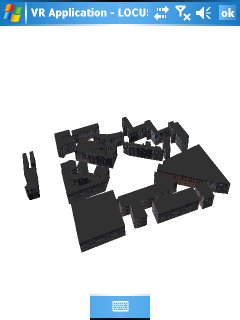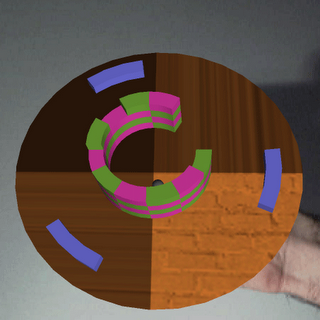Managed Direct3D Mobile (MD3DM) is a graphics API developed by Microsoft for mobile applications. During the past few months, I have developed another customised mobile 3D graphics engine based on MD3DM and C#. The engine is operational in Pocket PCs, Smartphones, and other devices running Windows CE with the .NET Compact Framework. The graphics engine operates as a separate mode handling the output from the tracking hardware (GPS and/or digital compass) automatically providing six degrees-of-freedom to generate mobile VR applications. An example sceenshot of the MD3DM VR interface representing City University campus is shown below.

Compared to the Virtual Navigator, the advantages of MD3DM is that it takes full advantage of graphics hardware support and enables the development of high-performance three-dimensional rendering. In addition, it provides support to load binary 3D files which are much faster than VRML does. On the other hand, the major disadvantage is that it requires a semi-automatic procedure in order to prepare the binary 3D files that contain multiple textures. Using appropriate functionality of a modelling package (a feature called Render To Texture) the textured model’s coordinates were first flattened and then unwrapped on a new untextured model resulting in having just one texture and one set of UVW coordinates for a whole number of meshes.

